Griffiths Lab
@griffithslab.bsky.social
Discovering the remarkable intracellular dynamics of killer T cells
You can find a great summary of the work by @jcellsci.bsky.social here: journals.biologists.com/jcs/article/...
And a profile of first author @adamrochussen.bsky.social here: doi.org/10.1242/jcs....
Huge thanks to @thecimr.bsky.social for supporting this work!
And a profile of first author @adamrochussen.bsky.social here: doi.org/10.1242/jcs....
Huge thanks to @thecimr.bsky.social for supporting this work!
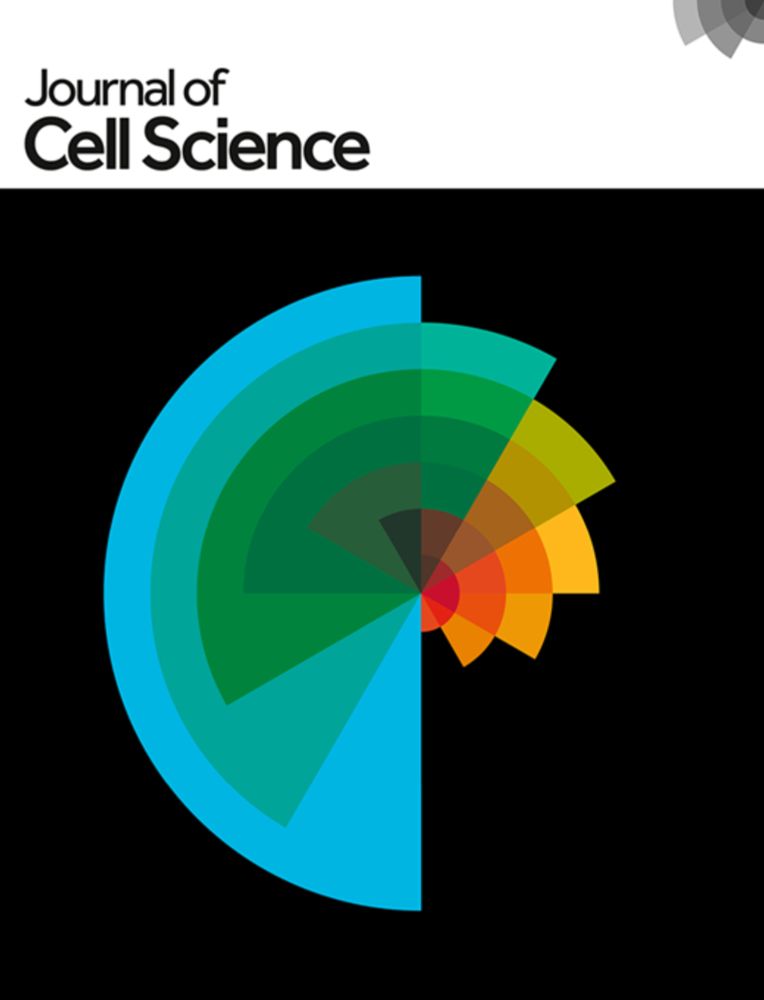
Cytotoxic T lymphocytes adapt to loss of a key polarity factor
Cytotoxic T lymphocytes (CTLs) kill infected or cancerous cells by secreting cytotoxic enzymes at the polarised immune synapse, a process called degranulation. The Rho GTPase CDC42 is crucial for cell...
journals.biologists.com
August 4, 2025 at 7:31 PM
You can find a great summary of the work by @jcellsci.bsky.social here: journals.biologists.com/jcs/article/...
And a profile of first author @adamrochussen.bsky.social here: doi.org/10.1242/jcs....
Huge thanks to @thecimr.bsky.social for supporting this work!
And a profile of first author @adamrochussen.bsky.social here: doi.org/10.1242/jcs....
Huge thanks to @thecimr.bsky.social for supporting this work!
If you find a difference in phenotype between knockout and inhibitor/knockdown, transcriptional adaptation may be the culprit. This remarkable phenomenon demonstrates the robustness & complexity of cells, but can hamper CRISPR-based investigations if you aren't aware of it!
doi.org/10.1242/jcs....
doi.org/10.1242/jcs....

Transcriptional adaptation after deletion of Cdc42 in primary T cells
Highlighted Article: CRISPR/Cas9-mediated deletion of Cdc42 in primary T cells triggers transcriptional adaptation, leading to enhanced T cell function. Chemical inhibition with CASIN is highly specif...
doi.org
August 4, 2025 at 7:31 PM
If you find a difference in phenotype between knockout and inhibitor/knockdown, transcriptional adaptation may be the culprit. This remarkable phenomenon demonstrates the robustness & complexity of cells, but can hamper CRISPR-based investigations if you aren't aware of it!
doi.org/10.1242/jcs....
doi.org/10.1242/jcs....
This phenomenon is called "transcriptional adaptation", as coined by @stainierlab.bsky.social
Consistent with their NMD-mediated mechanism, we found targeting the promoter of Cdc42 avoids TA in CTLs. It also seems to be specific for CDC42 among Rho GTPases in CTLs.
Consistent with their NMD-mediated mechanism, we found targeting the promoter of Cdc42 avoids TA in CTLs. It also seems to be specific for CDC42 among Rho GTPases in CTLs.
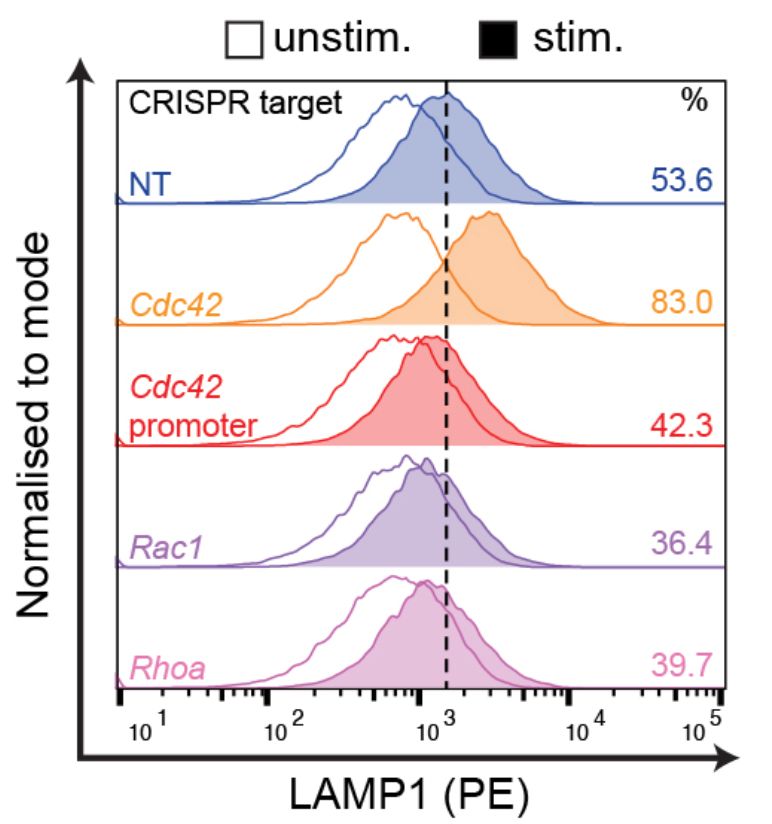
August 4, 2025 at 7:31 PM
This phenomenon is called "transcriptional adaptation", as coined by @stainierlab.bsky.social
Consistent with their NMD-mediated mechanism, we found targeting the promoter of Cdc42 avoids TA in CTLs. It also seems to be specific for CDC42 among Rho GTPases in CTLs.
Consistent with their NMD-mediated mechanism, we found targeting the promoter of Cdc42 avoids TA in CTLs. It also seems to be specific for CDC42 among Rho GTPases in CTLs.
Multi-omics revealed that the knockout cells were compensating for the loss of CDC42 by transcriptionally upregulating genes that could enhance T cell function, including by upregulating the activity of related Rho GTPases!

August 4, 2025 at 7:31 PM
Multi-omics revealed that the knockout cells were compensating for the loss of CDC42 by transcriptionally upregulating genes that could enhance T cell function, including by upregulating the activity of related Rho GTPases!
CRISPR/Cas9-mediated gene deletion normally requires several days of recovery before assaying cellular function.
When we performed killing assays daily after delivery of RNPs, we found that the knockout cells initially pheno-copied inhibited cells, but then regained functionality over time
When we performed killing assays daily after delivery of RNPs, we found that the knockout cells initially pheno-copied inhibited cells, but then regained functionality over time
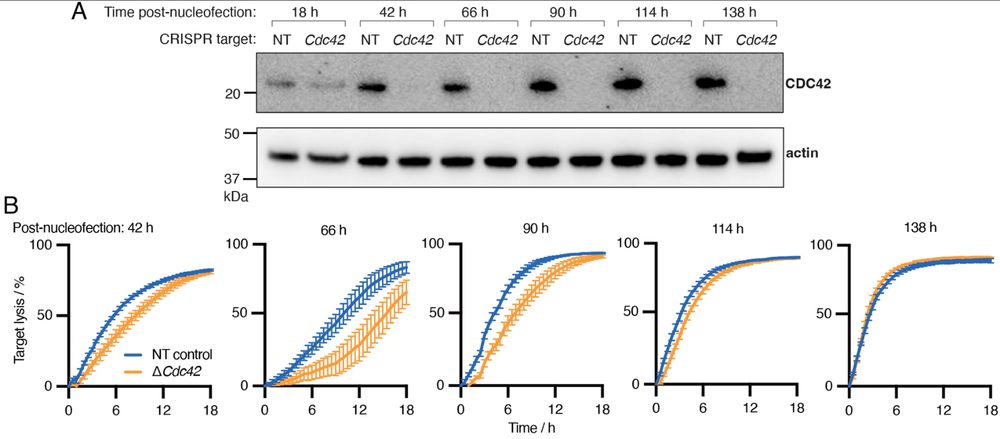
August 4, 2025 at 7:31 PM
CRISPR/Cas9-mediated gene deletion normally requires several days of recovery before assaying cellular function.
When we performed killing assays daily after delivery of RNPs, we found that the knockout cells initially pheno-copied inhibited cells, but then regained functionality over time
When we performed killing assays daily after delivery of RNPs, we found that the knockout cells initially pheno-copied inhibited cells, but then regained functionality over time
Inhibiting CDC42 with a chemical inhibitor (CASIN) gave the opposite result: worsened CTL function.
Meanwhile, the knockout cells showed *enhanced* function regardless of inhibitor treatment ...
Meanwhile, the knockout cells showed *enhanced* function regardless of inhibitor treatment ...
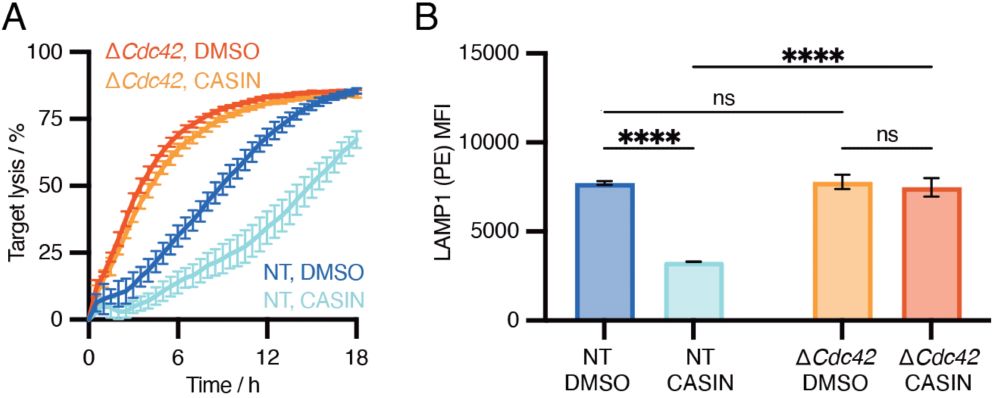
August 4, 2025 at 7:31 PM
Inhibiting CDC42 with a chemical inhibitor (CASIN) gave the opposite result: worsened CTL function.
Meanwhile, the knockout cells showed *enhanced* function regardless of inhibitor treatment ...
Meanwhile, the knockout cells showed *enhanced* function regardless of inhibitor treatment ...
Confusingly, we found the knockout cells performed *better* than control cells across killing, degranulation, migration, and signalling.
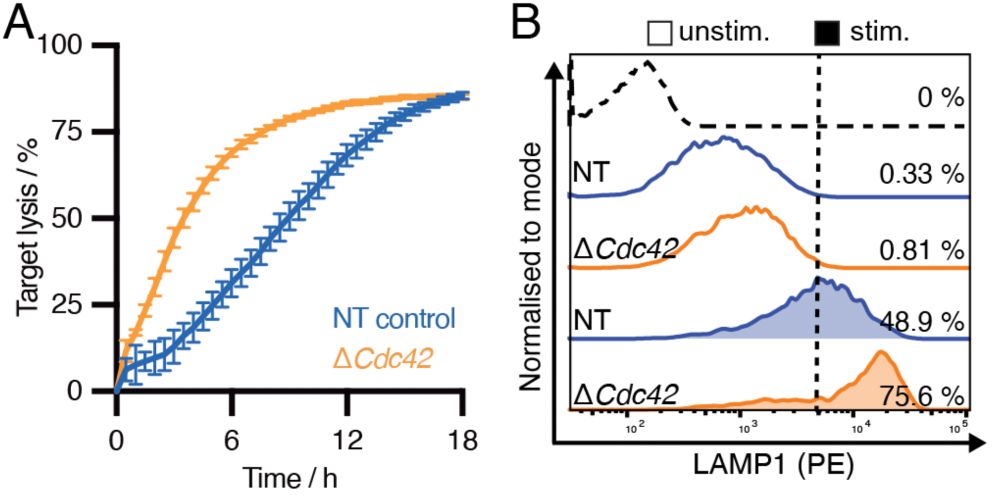
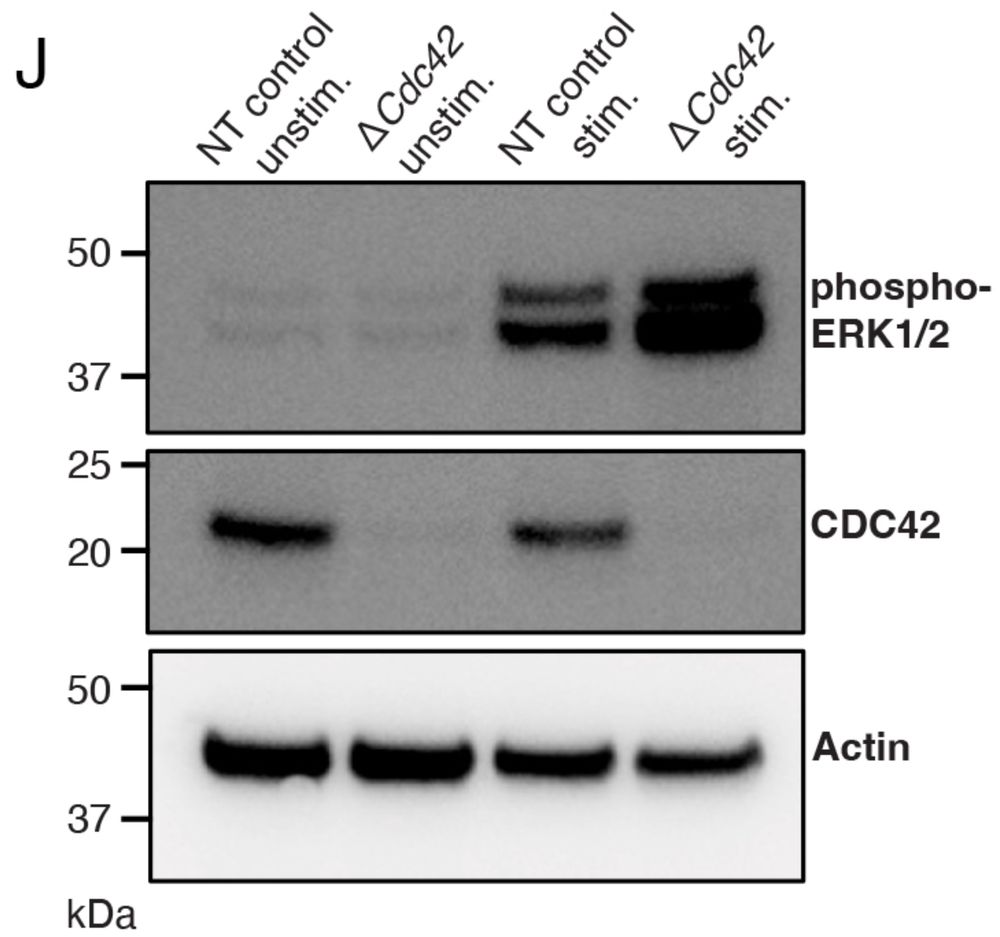
August 4, 2025 at 7:31 PM
Confusingly, we found the knockout cells performed *better* than control cells across killing, degranulation, migration, and signalling.
CDC42 is a Rho GTPase known to control cell polarity and cytoskeletal dynamics in many cell types.
It is necessary for embryonic viability in mice, and pathogenic variants cause immunodeficiency diseases in humans.
To determine its role in CTLs, we targeted the Cdc42 gene via CRISPR/Cas9
It is necessary for embryonic viability in mice, and pathogenic variants cause immunodeficiency diseases in humans.
To determine its role in CTLs, we targeted the Cdc42 gene via CRISPR/Cas9
August 4, 2025 at 7:31 PM
CDC42 is a Rho GTPase known to control cell polarity and cytoskeletal dynamics in many cell types.
It is necessary for embryonic viability in mice, and pathogenic variants cause immunodeficiency diseases in humans.
To determine its role in CTLs, we targeted the Cdc42 gene via CRISPR/Cas9
It is necessary for embryonic viability in mice, and pathogenic variants cause immunodeficiency diseases in humans.
To determine its role in CTLs, we targeted the Cdc42 gene via CRISPR/Cas9
You're seeing the actin cytoskeleton of cytotoxic T lymphocytes as they crawl across glass. These guys move at around 0.15 μm/s. Movie taken by PhD student @adamrochussen.bsky.social on our spinning disk confocal microscope.
January 8, 2025 at 9:59 AM
You're seeing the actin cytoskeleton of cytotoxic T lymphocytes as they crawl across glass. These guys move at around 0.15 μm/s. Movie taken by PhD student @adamrochussen.bsky.social on our spinning disk confocal microscope.

